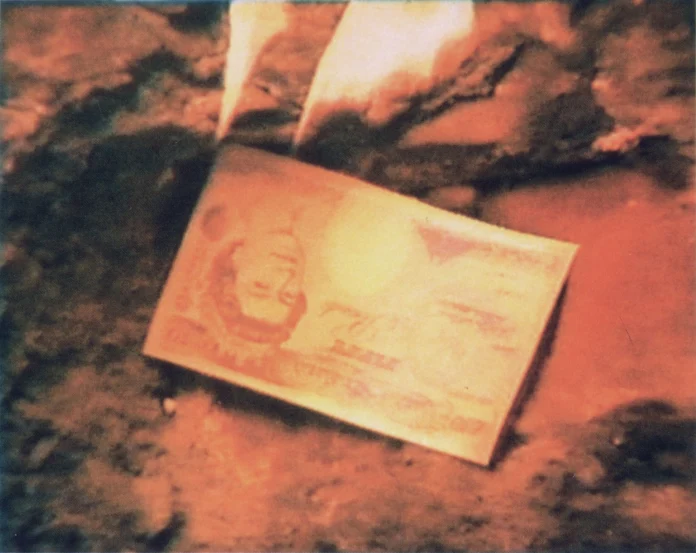Author: Andrew Russeth
Date: March 24, 2020
Link: https://www.artnews.com/feature/money-medium-artwork-history-1202680319/
Artists Bill Drummond and Jimmy Cauty start their story with how after making a huge hit and earning mountains of cash, they gathered at a fire and tossed over $1.5 million dollars into it bill after bill. But they aren’t the only ones to do such an act. French trailblazer Yves Klein who had earned an astonishing hit purchased the bar of gold with his awarded money and threw it in the water. As if following these artists’ footsteps, just in December 2020, Maurizio Cattelan implanted a $120,000 banana at the Art Basel Miami Beach. All of these incidences can be depicted as an art movement within itself: Money Art.
One artist of this movement, Kenya (Robinson), an MFA student at Yale University, recorded her bank balance every day for two years. What people saw was a relatively consistent three-digit account occasionally entering the negatives. Another artist, Merlin Carpenter, after charging his visitors and museums to show his work, states that he “went on a wild shopping spree enjoying luxurious goods and services, with only the receipts and empty shopping bags exhibited.”
“Money Art questions the churning operation of the art industry. It harnesses streams of cash for new ends and lets viewers see finance operating with often startling clarity.” Money art allows artists and viewers to question the operation of finances in this contemporary world–how it transcribes into power.
Analysis
These absurd acts of throwing away money to prove some point in what we value as art and money sound quite similar to the Dada movement. This movement known to be after effects to illustrate the horrors of post-WWI demonstrates the satirical nature of what “art” was at the time. Examples include the The Fountain and L.H.O.O.Q. which mocked the system of what people defined art. Although initially many of these incidences may be argued as malicious and mocking groups that don’t have the luxury to become as successful, it is a movement much needed as a wake-up call for redefining what exactly we may define as art and money. It ironically gives artists a playful platform to stretch the visitor’s perspective in where their money is truly going and challenges themselves to understand the power and value they are allowing money to hold above them.




